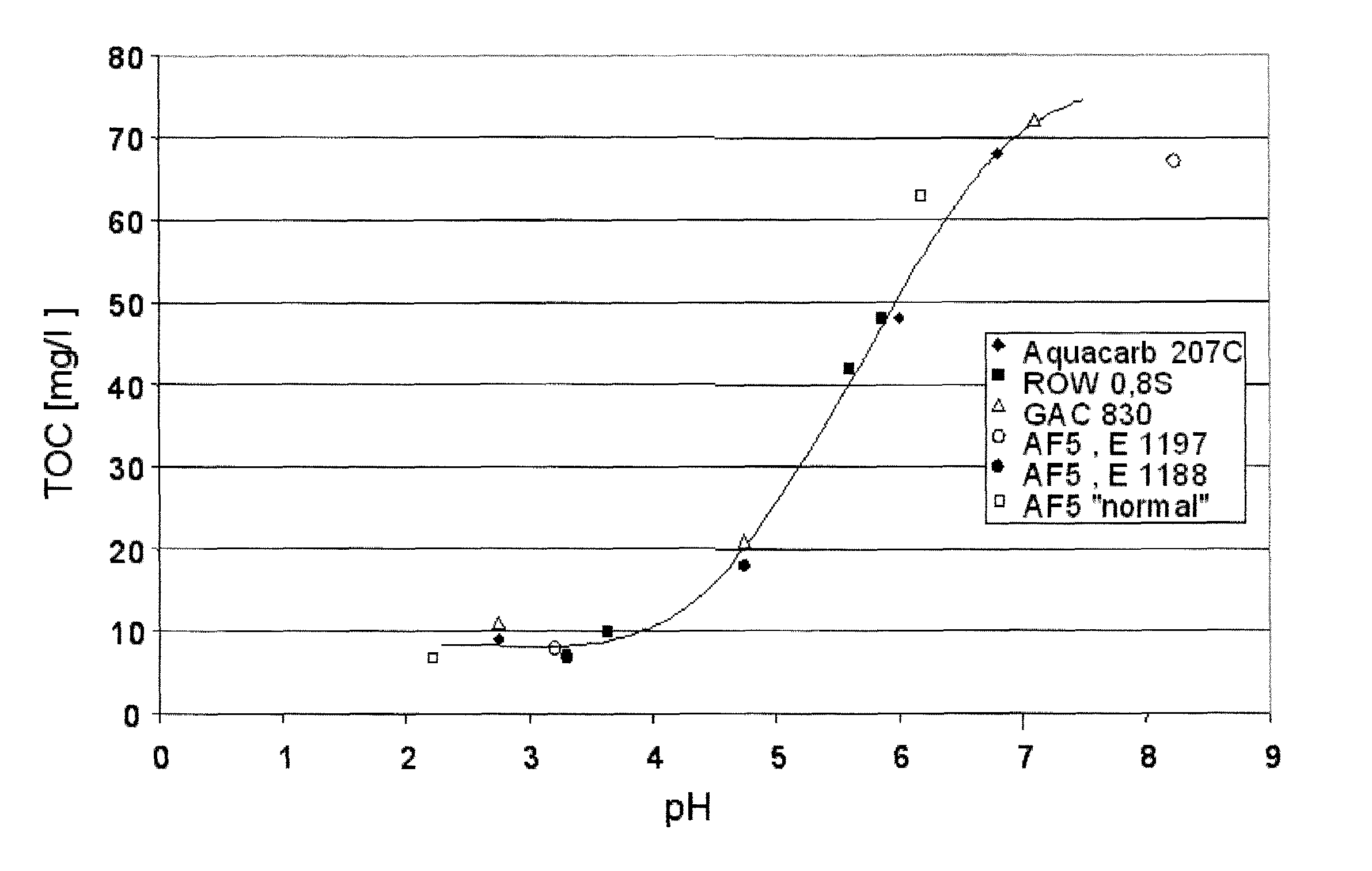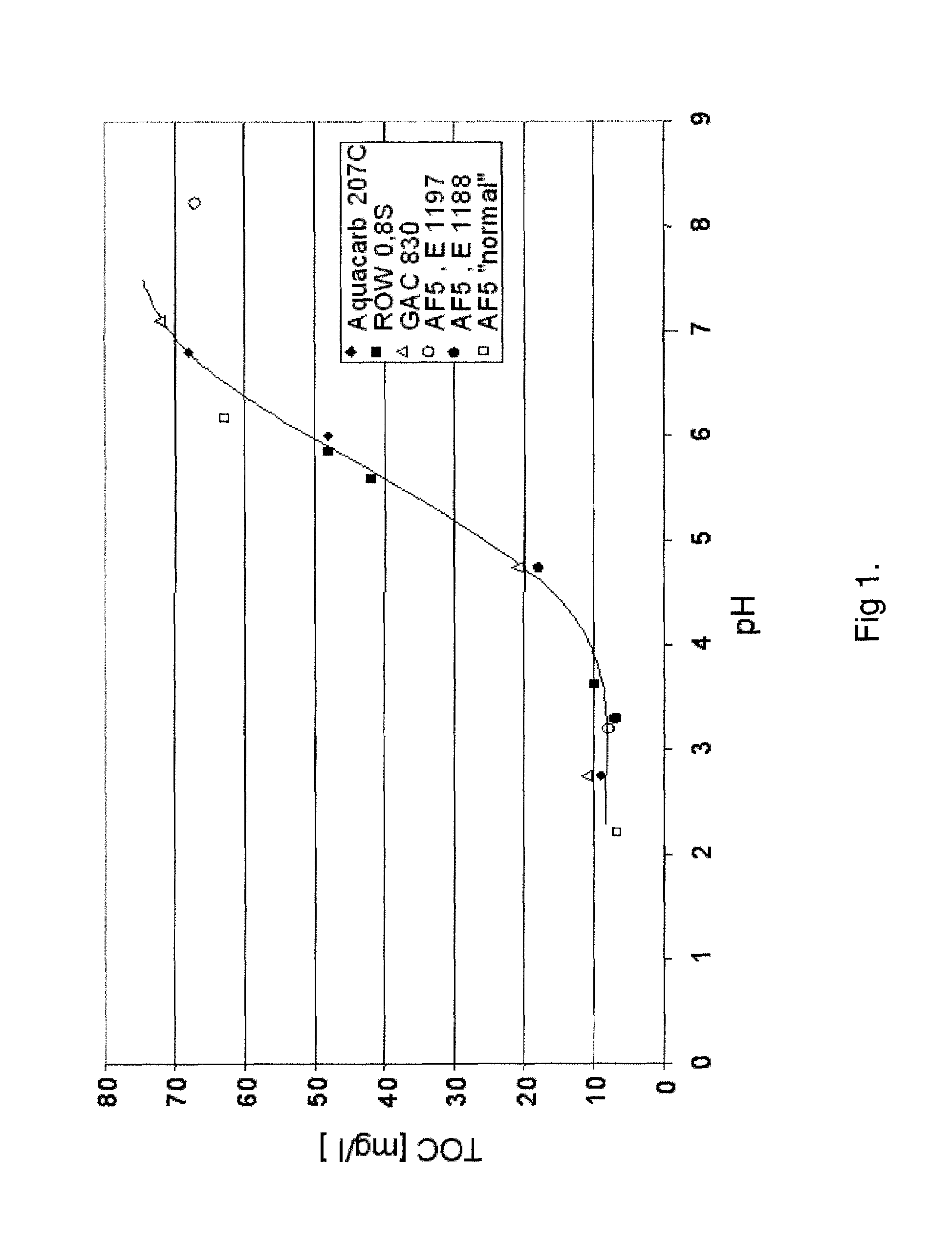Process for eliminating nitrogenous organic compounds from salt-containing water
a technology of nitrogenous organic compounds and salt-containing water, which is applied in the direction of multi-stage water/sewage treatment, water/sewage treatment by oxidation, sludge treatment by oxidation, etc. it can solve the problems of high capital cost and operating cost of ozonolysis, and cannot obtain indications for the application of these processes
- Summary
- Abstract
- Description
- Claims
- Application Information
AI Technical Summary
Benefits of technology
Problems solved by technology
Method used
Image
Examples
example 1
Wet Oxidation with Sodium Hypochlorite
[0053]9 kg of wastewater [density: 1.07 g / ml, 12% by weight NaCl, pH 12.4; TOC: 834 ppm, hydrazine hydrate: 900 ppm, 8.1 g, 0.162 mol (iodometric determination] were neutralized with hydrochloric acid. 36.4 g of 37% strength hydrochloric acid (0.37 mol) were required to achieve pH 7.08.
[0054]Subsequently, 341 g of NaOCl solution (45.04 g, 0.605 mol of NaOCl, sodium hypochlorite) were added in the form of a 13.2% strength by weight solution at 25° C. In this procedure, the redox potential increased from −557 mV to 957 mV (reference electrode Ag / AgCl). The excess of NaOCl based on the iodometric consumption for hydrazine hydrate was 73 mol % (83% by weight). A TOC of 300-400 ppm was found.
[0055]Subsequently, the water was heated to 50° C. for 0.5 h. At 25° C., a pH of 6.46 and a redox potential of 977 mV were present. By means of titrimetric determination (0.05 M NaAsO2), the consumption of NaOCl was determined. 9.39 g, 0.126 mol, of NaOCl were de...
example 2
[0059]A wastewater which had been pretreated with NaOCl as described in Example 1 was treated with ozone at pH 7 and 80° C. in an ozonolysis apparatus consisting of an ozone generator, a stirred reactor, an ozone flow meter and a pH monitoring. As carrier gas, use was made of oxygen. In this process the rate of the fed ozone (g / l), the experimental period and the measurement parameters TOC, AOX and Ntot were determined by sampling. The results are shown in Table 1.
example 3
Adsorption with Pretreatment
[0062]The water as described in Example 1, preoxidized with NaOCl, was treated in shake experiments with activated carbons (Aquacarb® 270C (Chemviron Carbon), GAC 830, ROW 0.85 Supra (both from Norith) and also 2 Lewatit® AF5 types, special microporous adsorber resins from Lanxess Deutschland GmbH. In this process, in each case 100 g of the adsorbents were admixed with 1000 ml of water from Example 1 in a cylindrical flask at pH 3-8 and kept in motion in a rolling apparatus for 48 h at 25° C., so that a thermodynamic adsorption / desorption equilibrium could be established. With all adsorbents, at a pH of less than 4 a TOC content of less than 10 ppm was achieved (FIG. 1).
PUM
| Property | Measurement | Unit |
|---|---|---|
| temperature | aaaaa | aaaaa |
| pH | aaaaa | aaaaa |
| temperature | aaaaa | aaaaa |
Abstract
Description
Claims
Application Information
 Login to View More
Login to View More - R&D
- Intellectual Property
- Life Sciences
- Materials
- Tech Scout
- Unparalleled Data Quality
- Higher Quality Content
- 60% Fewer Hallucinations
Browse by: Latest US Patents, China's latest patents, Technical Efficacy Thesaurus, Application Domain, Technology Topic, Popular Technical Reports.
© 2025 PatSnap. All rights reserved.Legal|Privacy policy|Modern Slavery Act Transparency Statement|Sitemap|About US| Contact US: help@patsnap.com


